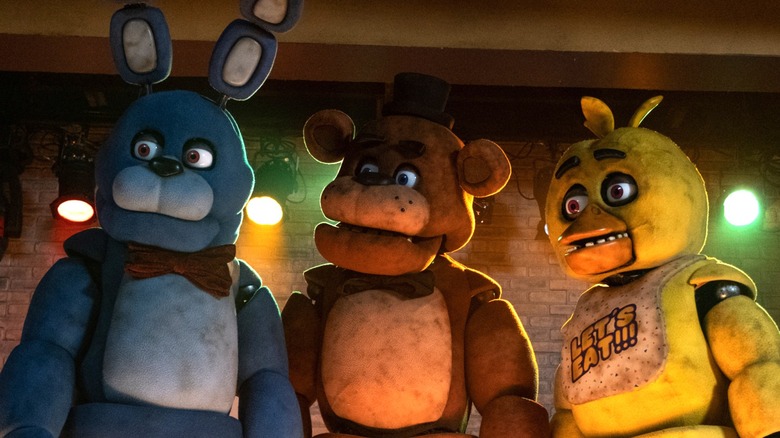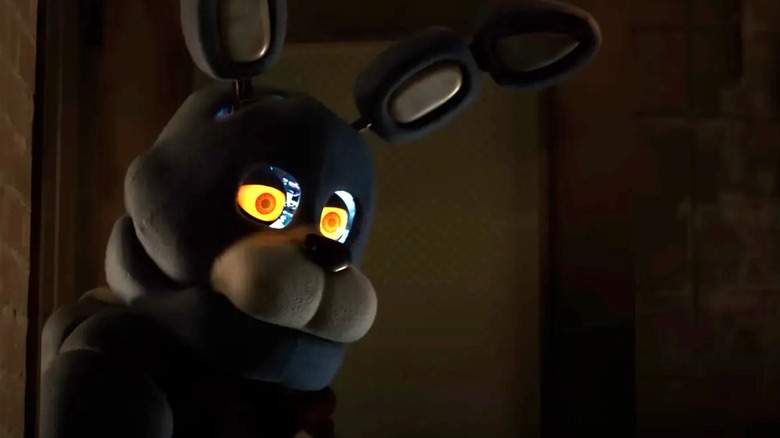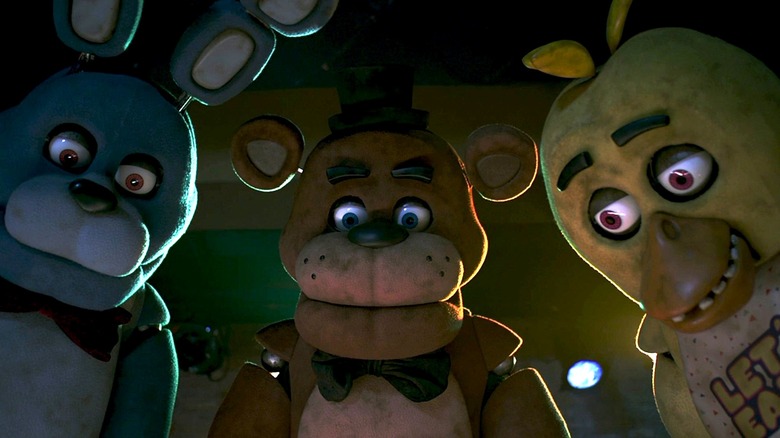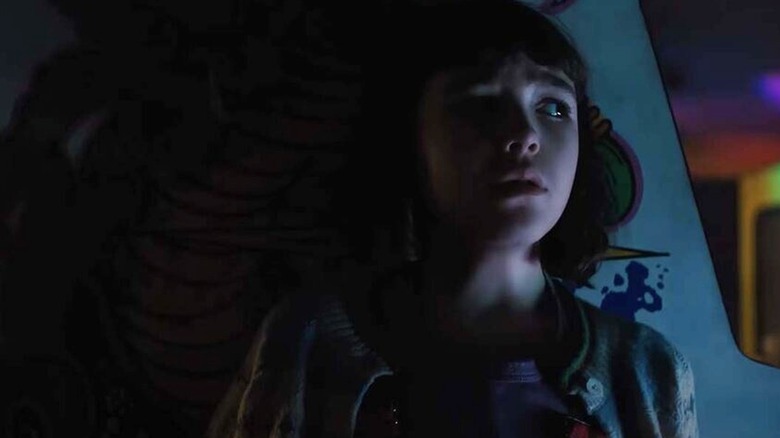Why Five Nights At Freddy's Should Have Been Rated R
Contains spoilers for "Five Nights at Freddy's"
"Five Nights at Freddy's" has taken on a life of its own since the first game came out in 2014. People love the series, a love that has led to numerous sequels being released, and fans have shown their dedication to Freddy Fazbear and the gang online through things like copious quantities of fan art and original "Freddy's" songs. Needless to say, expectations have been high for the "Five Nights at Freddy's" movie, and it's sure to be a monster at the box office.
The main thing putting a damper on some fans' expectations is the fact that the film is rated PG-13, meaning it can't be as gory or messed up as a movie that's rated R. Director Emma Tammi spoke to GamesRadar+ about keeping the rating PG-13, and her explanation is solid. "It felt like it was important and really exciting to be able to include a younger audience to come see this movie. But we also, of course, wanted to deliver on the scares and at least the implied violence of a kill, even if you don't see everything."
To be fair, this is in line with the games, which feature more implied violence than visual gore. The "FNaF" franchise does have a massive younger fanbase, and there's something to be said about creating entryways for new generations to be introduced to horror. At the same time, an R rating really could've taken the movie to the next level.
More brutal kills could've differentiated the FNaF movie from the games
A big reason why "Five Nights at Freddy's" took off online is the proliferation of playthrough videos, which can be fun to watch thanks to the franchise's effective jump scares. Most deaths in the game occur when a player gets cornered by an animatronic, which then pounces on them or screams right before the screen cuts to black. When you're heavily invested in a game and carefully watching the screen, this tactic can produce a pretty amusing and satisfying response. But while the movie largely copies this method, with most of its deaths being implied rather than shown, film is a different medium than video games.
Jump scares are old hat in movies, not quite packing the same punch as in an interactive game, which makes the kills in the "FNaF" adaptation not quite as impactful. Arguably, the most gruesome death involves Max (Kat Conner Sterling), who's pulled into an animatronic's mouth before it chomps down on her, splitting her in two, all of which is shown in shadow. It would've been great if every death had at least that level of carnage, rather than showing someone screaming before cutting away and revealing a blood splatter where they were standing.
Come on, some of those characters deserved a more brutal ending. Aunt Jane (Mary Stuart Masterson), for example, is a total menace throughout the film and needed a bloodier visit from Freddy.
The FNaF movie is late to the party on bloody animatronic-based horror movies
The concept of a bunch of Chuck E. Cheese-style animatronics coming to life and wreaking havoc is inherently fun. The singing and dancing creatures are cute, but they'll straight-up kill you. But while the idea may have been novel in 2014, other creatives have taken the idea and run with it before the franchise made its way to theaters, meaning "FNaF" is a little late to the game.
The most obvious example of this is 2021's "Willy Wonderland," starring Nicolas Cage as a drifter who lays some hurt on other murderous animatronics while they kill anyone else who enters the entertainment center. That film leans into a more mature rating, with characters getting stabbed and decapitated with blood splattering everywhere. The same could be said for 2019's "The Banana Splits Movie," where the '60s mascots go on a rampage, killing people, including setting one guy's head on fire.
These movies share similar concepts but involve more intense kills, making "Five Nights at Freddy's" feel a little tame by comparison. The "FNaF" movie has the games as a road map, but being released into a more crowded marketplace means the film really needed to compete on the same level as its contemporaries.
An R-rated Five Nights at Freddy's could explore the lore of the series more accurately
In the same vein as its implied violence, there's a ton of additional lore for "Five Nights at Freddy's" that's not presented outright to players. Instead, they learn it through books based on the series or brief lines of dialogue in the games. For example, the first game tells you your eyeballs and teeth pop out if shoved into an animatronic suit, but never really shows this happening. For example, the first game tells you your eyeballs and teeth pop out if shoved into an animatronic suit, but never actually shows this happening (though one deathscreen does appear to show us a non-bloody aftermath). The movie could have depicted that in all of its gruesome detail rather than leaving it to the audience's imagination.
With most of the games' information coming via dialogue and newspaper clippings, a movie would be a perfect avenue to explore the greater "Freddy's" lore in vivid detail. After all, there's the old movie adage of "show, don't tell," and showing all of these horrible things would sear them into the audience's minds better than characters explaining what happened to one another.
At the end of the day, it makes perfect sense for the creatives behind "Five Nights at Freddy's" to want to keep it PG-13. It'll likely be more profitable in theaters that way, and it appeals to a major demographic playing the games. But if the first movie proves to be a success, there's always a chance the sequels could get more gruesome as time goes on.



